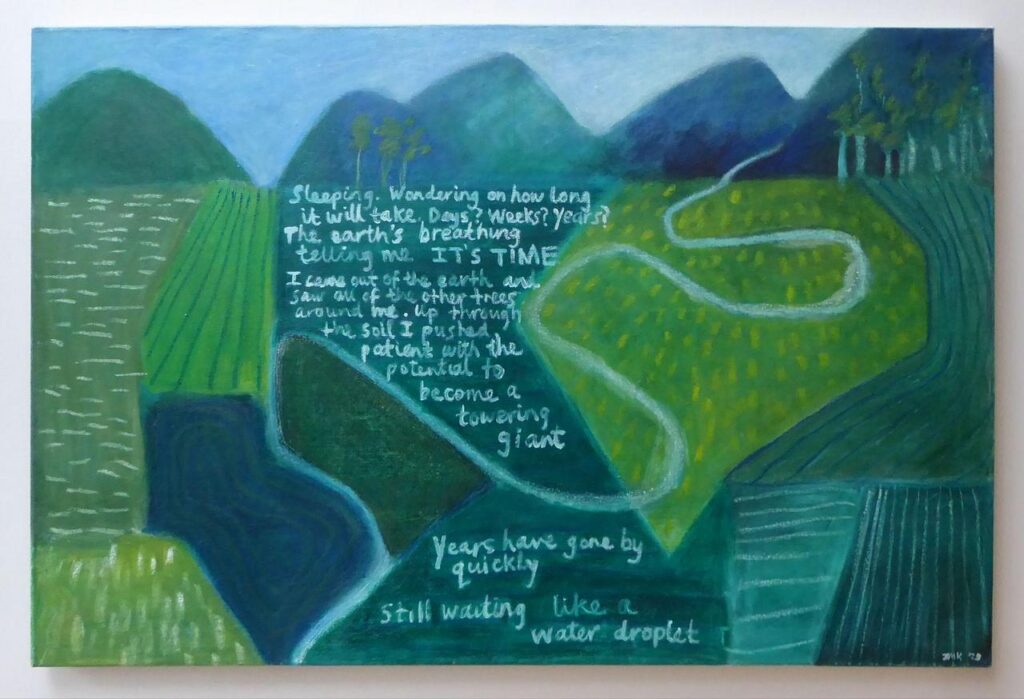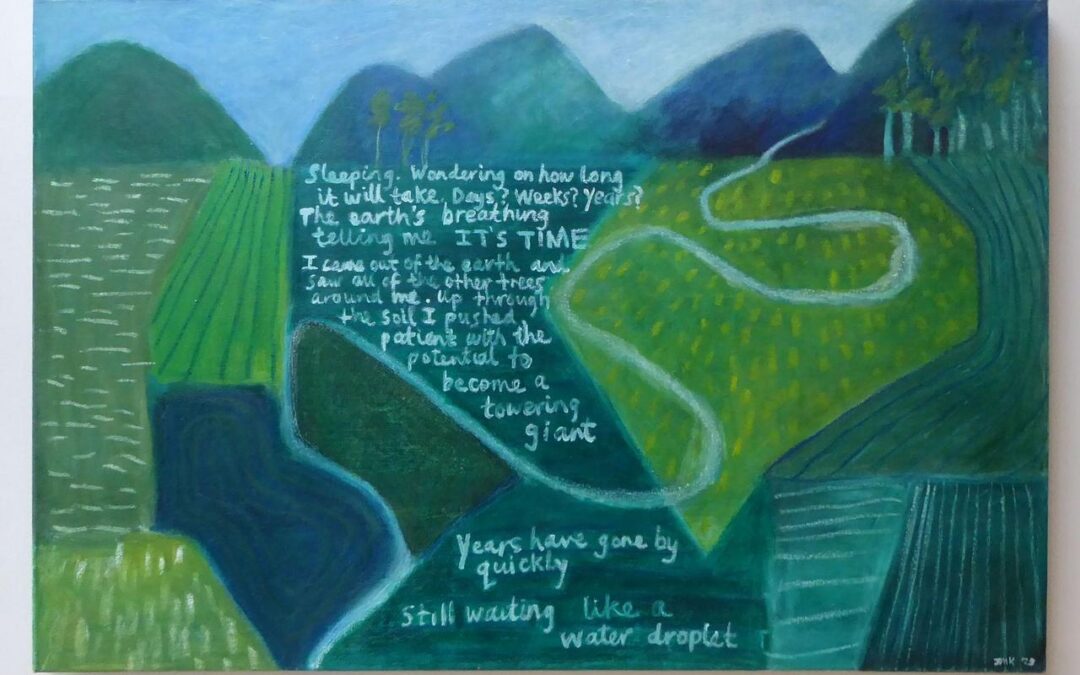by Jane Riddiford
Several years ago when the vision for Ruamāhanga Mauri Oho was barely an idea, we took my mother Yvonne to Waihinga bush, now set aside as a QE11 covenant by Pete Smith, whose family have farmed there since the 1840’s. This is one of the most notable stands of remnant podocarp forest, close to Martinborough and the Ruamāhanga river. I knew the bush would in some way be important for the native plant restoration work we were embarking upon, but I had no idea how influential it would be. Yvonne, recalls the day we took her there:
“I remember seeing tall kahikatea which made me think of the ones that we passed whenever we drove to Otorohanga when I was a child, they were a rarity even in the 1930’s as so many of them had been used for butter boxes to meet the growing demand for global trade. I was very impressed as you don’t see something like that very often. At that moment, the thought that we might achieve something similar on Ruamāhanga Farm for future generations to enjoy, was very exciting.”
Rod and I imagined children and young people there; planting, listening and learning to see the world around them in new ways. Fast forward two and a half years, we are now living at Ruamāhanga Farm and rather like the forest itself, it feels like we are being held by an often invisible web of connection. Again and again we encounter the seeds of possibility this brings. One step leads to another. Key to the whole thing is the spirit of collaboration between the different people we have encountered. A couple of months ago I received an email from the Ruamāhanga Restoration Trust inviting us to a planting day in Waihinga Bush. There we met Gina Smith (Pete Smith’s sister), who is the Principal of Te Kura o Paetūmokai (Featherston School). Two days later that imaginative spark became a reality. We were back in the bush, this time with tamariki (children) from the school, planting and restoring an understory beneath those towering trees. Later that week we visited the school and Rod and I ran a written and spoken word workshop with the tamariki. We helped them to imagine themselves as a seed in the bush waiting in the rich moist soil until the conditions were right to grow. We asked what it felt like, what did they hope they would become? Who or what might support them in their journey from the dark to the light.


Learning about the hammered bark of Matai in Waihinga Bush with Trevor Smith of QE11 National Trust and in the Ruamāhanga Oxbow with Rod Sugden
Around this time, again through an introduction from the Ruamahanga Restoration trust, our collaboration with artist Jenny Keate was developing. A large part of her ‘Looking Sideways’ exhibition at Aratoi Museum and Art Gallery in Masterton, draws on time spent sketching along the degraded waterways we know so well, planting in our wetland restoration and in the Waihinga bush. Like us Jenny had the benefit of working alongside the tamariki from Te Kura o Paetūmokai. Thanks to the support of Trees that Count and Greater Wellington Regional Council we were able to plant karaihe, kahikatea and other trees and sedges.

Different threads naturally wove together providing an opportunity for Jenny to incorporate writing from the tamariki into some of her paintings. Jenny has been exploring the relationship between humans and trees and these paintings speak to the story of the community supporting the whenua along the edges of the Ruamāhanga river.
About her one woman show becoming a collaborative journey Jenny said; “It’s been inspiring for me to realise how my skills as a painter can contribute towards an environmental project. It gives me hope for the future and the motivation to keep going.”
The tamariki were inspired to see how their words had traveled and influenced the creative work of others. This called for the next step to unfold. Thanks to the manaakitanga (care and relationship) of Wiremu Dawson, Jenny ran an art workshop with the tamariki at Hau Ariki Marae in Martinborough. In preparation for expressing themselves through paint, Rod guided the tamariki in a gentle movement activity, in which they imagined themselves walking through the bush and the wetland. Through combining boundaries and freestyle, paintings emerged that conveyed the movements within the natural world. Themes included rivers in homelands, a giant moa watching over things, the wind that howls across the Wairarapa plains and the feeling of planting young trees in wet muddy ground. Wiremu, who is one of the kaumatua (elders) at Hau Ariki, described the sense of generational growth that he experienced in the paintings and kōrero of the tamariki. He called this whakatipuranga.


In this iterative, collaborative story there is one vital ingredient that has made so much possible. The waka that has ferried the tamariki to many of the workshops is thanks to the generosity of Green Jersey Cycles who not only provided bus and driver, but in good heart dealt with wet boggy and almost guaranteed to get stuck conditions.
Future steps include more planting, more written and spoken word sessions and a presentation and art workshop with and for the staff at Aratoi, where the tamariki will see the fruits of their endeavors displayed as part of the Looking Sideways exhibition. Last but definitely not least is an international call and response exchange. Young People involved with Global Generation in London will respond to the tamariki’s writing to create a piece of Land Art as part of the River of Hope Festival and we will create more art beside the Ruamāhanga.

